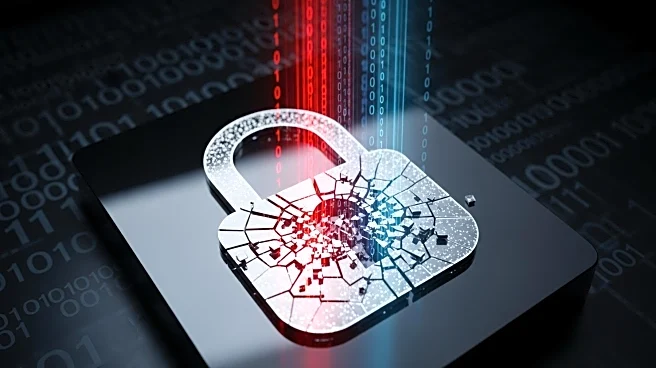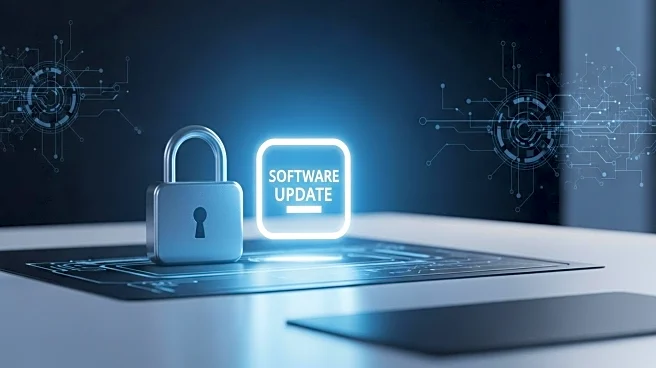What is the story about?
What's Happening?
A new ransomware variant, known as HybridPetya, has been identified by cybersecurity firm ESET. This malware is capable of bypassing UEFI Secure Boot, a critical security feature in Windows systems designed to prevent unauthorized software from booting. HybridPetya targets the EFI boot partition, allowing it to encrypt a computer's hard drive and render it inaccessible. The ransomware demands a payment of $1000 in Bitcoin for decryption. Although currently in the research phase, HybridPetya has not been observed in active attacks. The exploit it uses was addressed in a Windows update in January 2025, suggesting that systems with up-to-date patches are protected.
Why It's Important?
The emergence of HybridPetya underscores the evolving threat landscape in cybersecurity, particularly concerning ransomware. By bypassing UEFI Secure Boot, HybridPetya challenges one of the most robust security measures available, highlighting vulnerabilities in system defenses. This development is significant for businesses and individuals relying on Windows systems, as it emphasizes the importance of maintaining updated security patches. The potential for widespread disruption and financial loss is considerable, given the ransomware's ability to lock users out of their data. This situation stresses the need for continuous vigilance and investment in cybersecurity measures.
What's Next?
As HybridPetya is still in the research phase, it is crucial for cybersecurity experts and organizations to monitor its development closely. Companies should ensure their systems are updated with the latest security patches to mitigate potential risks. Additionally, there may be increased efforts to develop more advanced security protocols to counteract such sophisticated threats. Stakeholders, including IT departments and cybersecurity firms, will likely collaborate to enhance detection and prevention strategies against similar ransomware attacks.
Beyond the Headlines
The discovery of HybridPetya raises ethical and legal questions about the responsibilities of software developers and cybersecurity firms in protecting users. It also highlights the ongoing arms race between cybercriminals and security professionals. The incident may prompt discussions on the need for international cooperation in cybersecurity and the development of more stringent regulations to safeguard digital infrastructure.
AI Generated Content
Do you find this article useful?













